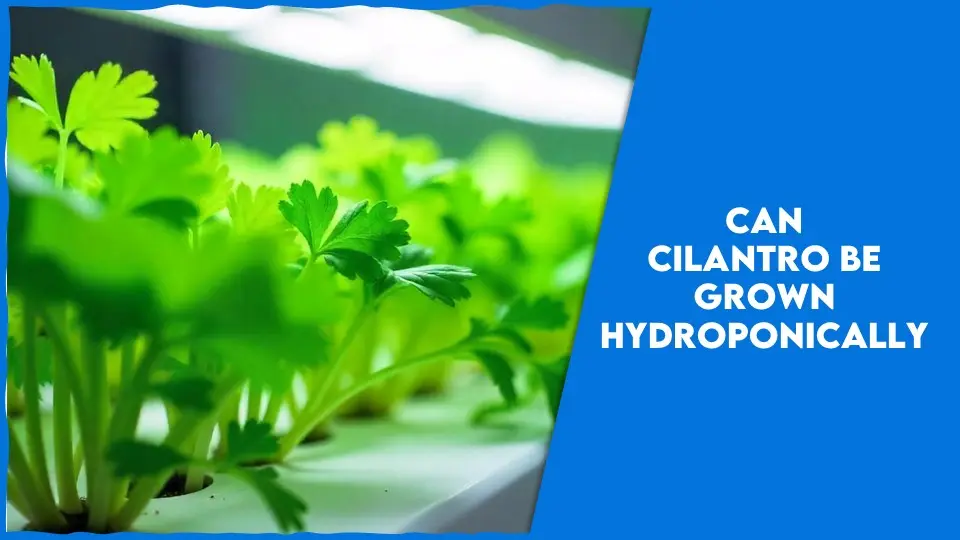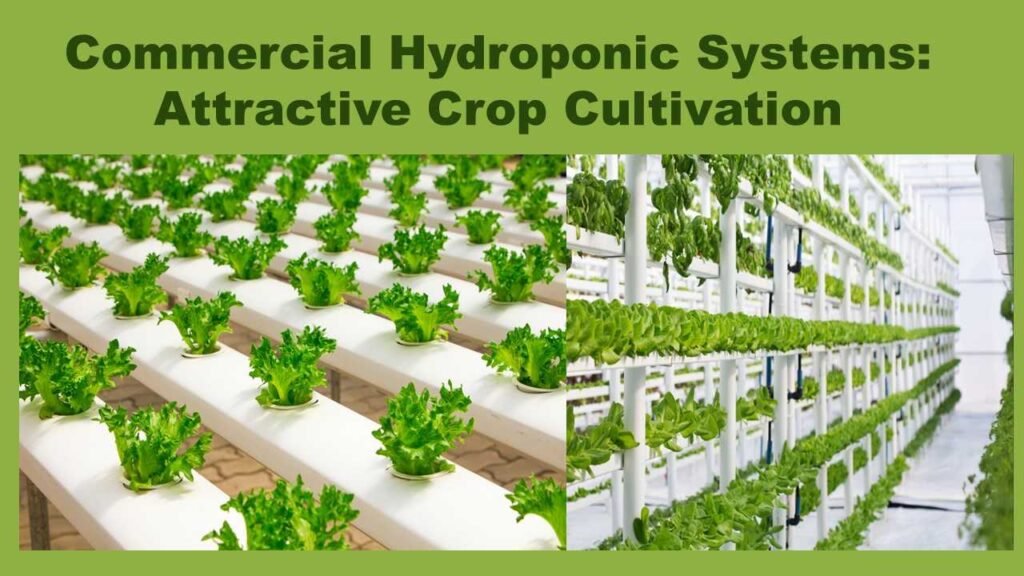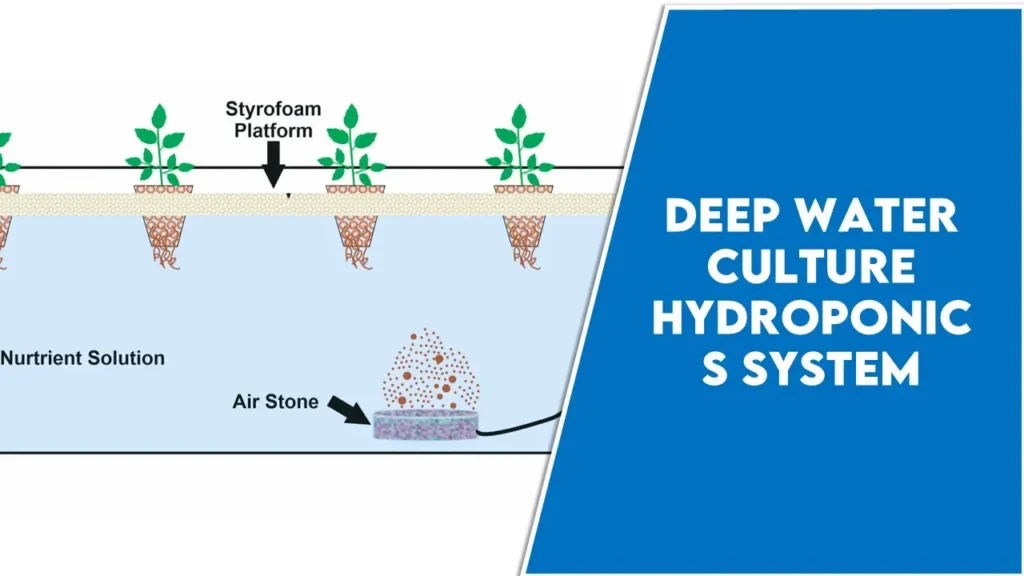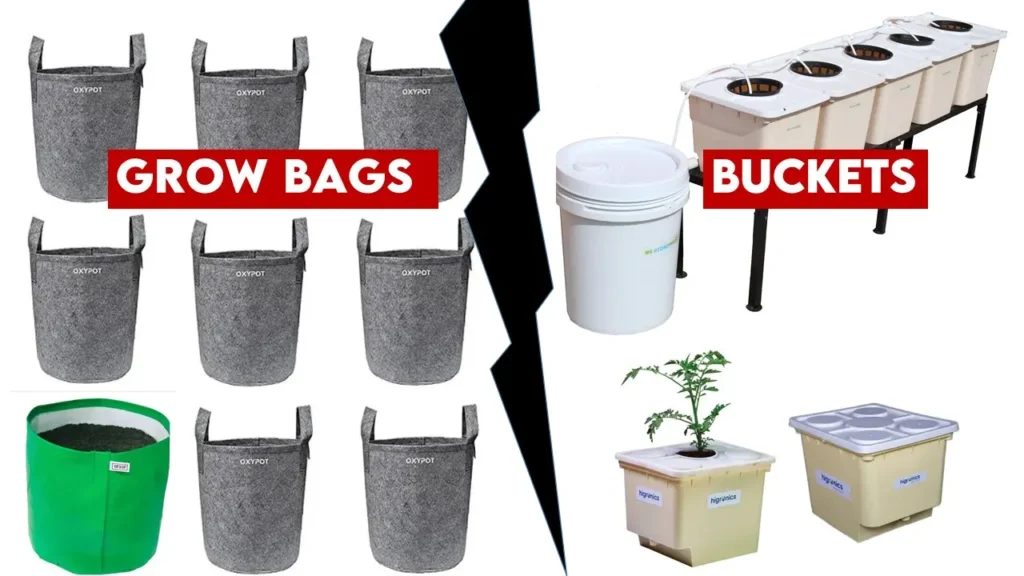Can Cilantro be Grown Hydroponically? A Step-by-Step Guide.
Cilantro is a love-it-or-hate-it ingredient, known for its distinct aldehyde flavor that some find refreshing while others compare it to soap. Despite the divide, it has been used in America since the 1670s, originally to mask the strong odor of meat. Beyond its flavor, cilantro adds essential nutrients and vitamins, including zinc, Vitamin A, Vitamin K, and Vitamin C into our diet.
Interestingly, cilantro refers to the leaves and stems of the coriander plant, while its seeds are known simply as coriander, a widely used spice across different parts of the world. Cultivating cilantro is relatively easy. But, Can Cilantro be grown hydroponically? The answer is yes. I will tell you exactly what you need to do to grow this magical herb in a hydroponic system and ensure its year-round availability.
How to Grow Cilantro Using Hydroponics?
Cilantro is an easy-growing, versatile herb that will grow easily on any type of hydroponic system, including DWC, NFT, ebb and flow, and even aeroponics can be used, yet DWC and NFT are particularly popular for their simplicity and efficiency. You may use any of these systems as per your suitability and the resources available, but make sure to meet the following conditions for its proper growth.
Optimal Growing Conditions for Hydroponic Cilantro
| Light | 12-16 hours per day. |
| Optimum Temperature | 59°F- 68°F |
| Growing Medium | Coir, rock wool, cocopeat, etc. |
| Optimal pH | 5.5-6.5 |
| Nutrients Required | Nitrogen, Phosphorus, Potassium. |
| ET | 1.2-1.8 mS/cm |
| TDS | 400-1000 ppm |
| Recommended Varieties | Calypso, Santos,Delfino, Slo Bolt. |
How to grow cilantro hydroponically
Choose the Right Seed/ Varieties
‘Calypso’ and ‘Slow Bolt’ are the most popular hydroponics varieties of Cilantro, these are slow-bolting varieties known for their good flavor and productivity, while “Santo” is also another good option.
Slow bolting varieties are best because these will take a longer time to flower and have a longer vegetative period, and that is exactly what we need in a hydroponic system. Another variety, like ‘Leisure cilantro’, is another excellent choice as it is bolt-resistant and has a slightly faster growth rate than Calypso, but it is known for its ‘ cut and come again’ property.
Other recommended Varieties:
- Santo: Uniform flavor with a darker leaf color.
- Leisure: Heat-tolerant variety, high-yielding, and ready to harvest in 28 to 40 days.
- Marino: A standard cilantro variety available in organic seed.
There are many other popular varieties that you may try, like Orlando, Slovenian, Dwarf, Lisbon, etc.
Germinate the Seed.
While the Cilantro plant is quite easygoing, its seeds take quite some work to germinate. It requires gentle ‘cracking’ of husk that holds the two cilantro seeds together and then soaking them in water for 24 to 48 hours. Traditionally, it can be done with the ‘ Paper Towel’ method.
First, keep the healthy and treated seeds in a damp towel or cotton. Then, spread it and put it in an airtight plastic bag. Keep this bag in a warm place away from the sunlight. Leave the seeds for 7-10 days, after which they will start sprouting and develop roots. This way, you will provide the right temperature, humidity, and substrate for the seeds to grow into healthy shoots.

Image Source: gardnersworld
Choose a Suitable Hydroponics System.
Only after the development of cilantro seeds’ first true leaves, wait for the root emergence, after which these seedlings are ready to be transferred into a proper hydroponics system.
As mentioned above, you can use any type of hydroponics system to cultivate cilantro. Make sure the space is clean and free of pests and diseases and a strong framework. Carefully place the seedlings into a net pot or net cups( 2-3 inches) and maintain their environment.
Check and Maintain Water Quality.
Keep the pH water between 5.5-6.5. To make adjustments, use pH paper or a pH meter. And never let the EC value exceed 1.8 mS/cm and TDC value above 1000 ppm exceed. It is a crucial step for healthy plant growth and proper functioning of the hydroponic system.
Prepare Nutrient solution for Hydroponic Cilantro
The nutrient medium needs to be monitored regularly; any problem within this system needs to be rectified as soon as possible, as excess or deficiency of any nutrient can cause great damage to the seedlings. A balanced nutrient solution also supports its growth while preventing bolting. Key nutrients and their doses are:
For Germination stage(0-10 days):
| NUTRIENTS | QUANTITY |
| Nitrogen(N) | 50-75 ppm |
| Phosphorus(P) | 20-30 ppm |
| Potassium(K) | 50-75 ppm |
| Calcium (Ca), Magnesium(Mg), & Sulfur(S) | Low doses |
Frequency: After Seeding Emerges(4-5 days after planting).
For Vegetative stage(10-30 days) & Maturation & Harvesting Stage(30-50 days).
| NUTRIENTS | QUANTITY |
| Nitrogen(N) | 150-200 ppm |
| Phosphorus(P) | 50-60 ppm |
| Potassium(K) | 180-250 ppm |
| Calcium(Ca) | 100-150 ppm |
| Magnesium(Mg) | 50-70 ppm |
| Sulfur(S) | 20-40 ppm |
Frequency: Change the nutrient solution every 7-10 days and flush the system with clean water 2-3 days before the final harvest to remove excess salts and enhance flavor.
Micronutrients like Iron(Fe), Zinc(Zn), Manganese(Mn), Copper(Cu), Boron(B), & Molybdenum(Mo) should also be included in trace amounts in this medium. In addition to nutrients, don’t forget to use oxygenated water(dissolved oxygen>6 ppm) to support root health and avoid water logging to prevent water-borne diseases.
Arrange Lights for Hydroponic Cilantro
The hydroponically grown system needs to have artificial lighting, as most of these are developed indoors. For proper photosynthesis in cilantro seedlings, consider light intensity, light Quality, light distance, and light time as follows:
| Light Intensity | 5,000-10,000 Lux(Medium) |
| Light Quality | Use Blue light(400-500 nm) or Red light(600-700 nm). It’s best to have a full spectrum of light to adjust accordingly. |
| Light Distance | Light sources should be kept between 6-12 inches away from the plant. |
| Light Time | 12-16 hours per day. |
Maintain Temperature.
Temperature usually depends upon the type of variety and growth stage of the seedlings.
| Seed Germination | 68°F-77°F |
| Seedling Growth | 64°F- 72°F |
| Mature Stage | 59°F-68°F |
Keep the temperature between 113°F-158°F to prevent bolting. However, extreme temperatures can damage the root system. Therefore, it needs to be measured and corrected timely.
Management
Keep each cilantro net pot or plant at a distance of 10-15 cm to ensure a regular supply of water, nutrients, and light. Regular trimming of the cilantro plants and yellow leaves can help maintain the plant’s shape and improve yields.
In an enclosed and controlled environment, there are only a few chances of pest and disease infestation, but if it occurs in your system, use biopesticides or organic pesticides to prevent them.
Harvesting of Hydroponic Cilantro
Harvesting of Cilantro can be done about 40-50 days after planting. If you want to harvest the leaves only, then use a scissor or fingers to snip the leaves; at this time, the plants must have reached 6-8 inches in height. Ensure not to damage the stem or root area as it has good regenerative abilities, which will lead to the growth of your plants’ sideways.
If you need to uproot the whole Cilantro plant, let it reach a height of 8-12 inches. Gently pull it out and cut the inedible parts.
While picking the leaves, don’t harm the shorter inner leaves, which are usually immature. This way, more vegetative yield will be promoted in the plants.
- Number of Harvest: You can expect 3-5 times from the same plant before it becomes woody. And if you are planning for an entire plant harvest, then you may replant the cilantro every 4-6 weeks.
- Average Yield: Around 1-2 ounces per harvest and 3-6 lbs per cycle, depending on the system. With multiple harvests, cilantro can produce 22-33 lbs.
Conclusion
For efficient space utilization and optimal nutrient uptake with minimal maintenance, hydroponics proves to be a game-changer for cilantro cultivation. However, keep in mind that its growth highly depends upon the environmental factors that can be easily manipulated under a hydroponics system and successful Cilantro cultivation begins only after its proper germination, making it essential to create the right conditions from the start. With hydroponic systems, growers can achieve consistent, high-quality cilantro while conserving resources and maximizing efficiency all year round.
Join Our Hydroponics Growers Group!
Connect with fellow hydroponics enthusiasts, share your ideas, ask questions, and grow together as a community.
👉 Join WhatsApp Group






